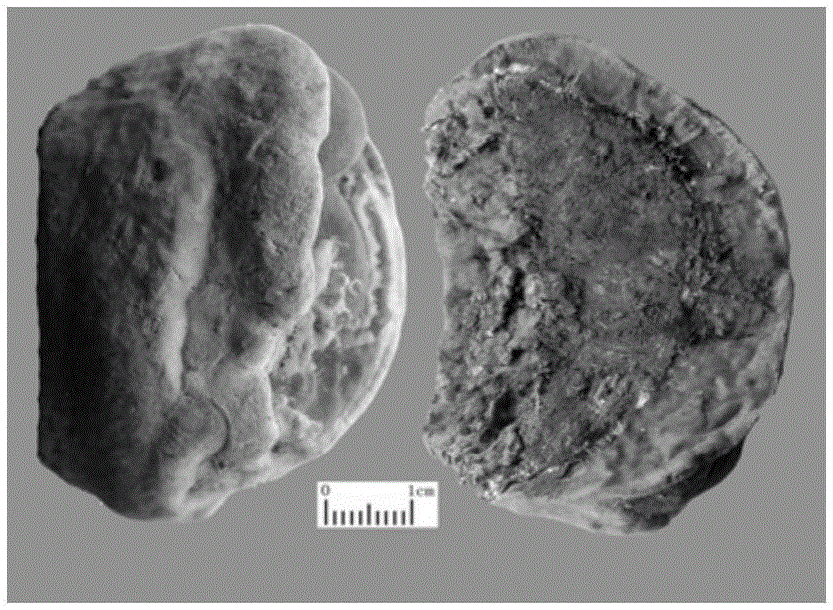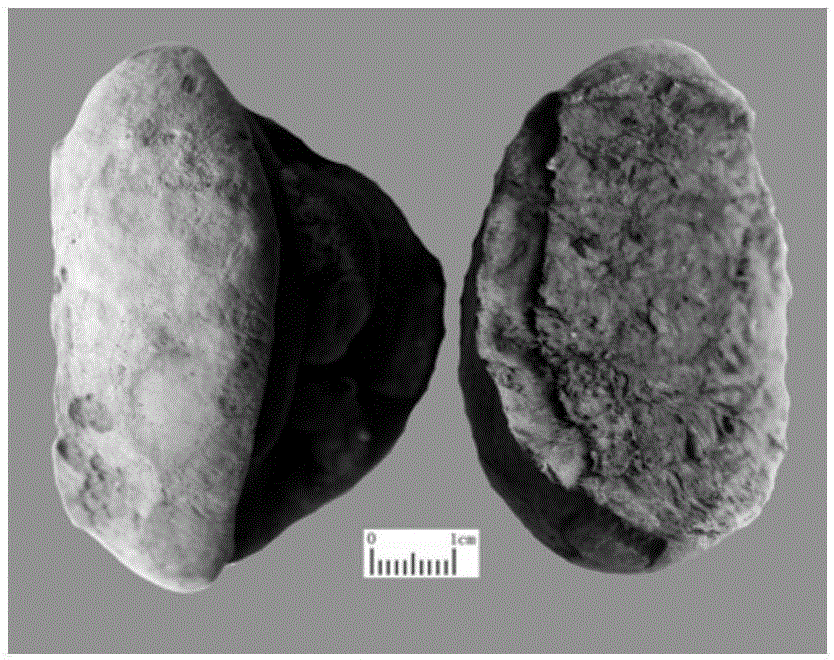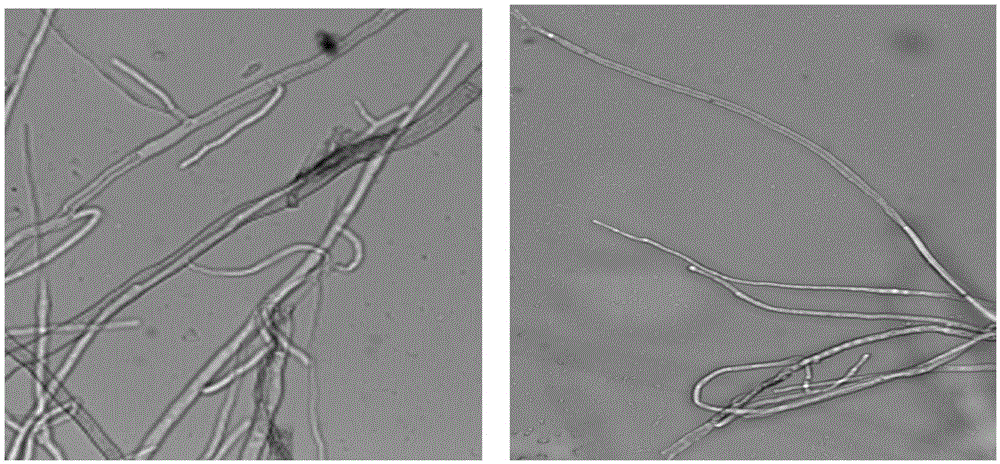Phellinus identification method
An identification method and a technology of a measurement method, which are applied in the identification field of Phellinus, can solve problems such as misuse of Phellinus, damage to food research and development, etc., and achieve the effect of enhancing transparency and facilitating observation
- Summary
- Abstract
- Description
- Claims
- Application Information
AI Technical Summary
Problems solved by technology
Method used
Image
Examples
Embodiment 1
[0032] Example 1 Phellinus Phellinus Appearance Appraisal
[0033] Remove impurities from the harvested Phellinus, remove the bad wood, soil or culture substrate attached to the base of the fruiting body, clean it or cut Phellinus into small pieces, let it dry naturally or put it on the Dry in an oven at 40-50°C. Take the original drug, remove impurities, wash it, cut it into small pieces, and dry it in the shade or at 40-50°C. Or take small pieces and remove impurities. For example, the ventral surface of the cap has a pore-like structure, and the surface is golden yellow or brownish yellow; the pore is oval or polygonal, and the flesh of the cap is yellow, brown or glossy wood color, and the color near the cap surface becomes darker. Bacterial pores can be seen on the cross-section of the fruiting body, the powder is yellow or brownish yellow, the hyphae are visible, the spores are oval, dispersed in the mycelial mass, and have a slightly sour smell and slightly bitter. I...
Embodiment 2
[0034] Example 2 Phellinus microscopic identification
[0035] Microscopic identification of Phellinus mycelium: take out the Phellinus mycelium, observe it under an optical microscope, take pictures, and record the experimental results
[0036] Microscopic observation of Phellinus powder: Grind Phellinus into powder, pass through a 200-mesh sieve, take an appropriate amount of powder on the center of the glass slide, drop 1-2 drops of chloral hydrate, and stir well; place the slide on the outer flame of an alcohol lamp, and heat it Stir while stirring, remove from heat when boiling, do not burn dry, burn, repeat 2-5 times depending on the condition of the glass slide, add 1-2 drops of glycerin after a little cooling, stir well, cover with a cover slip, absorb excess glycerin , observed under an optical microscope, and then photographed and recorded data. The function of chloral hydrate is to expand the cells, facilitate the observation of tissues, cells and their contents, a...
Embodiment 3
[0038] Component Identification of Phellinus Phellinus of Embodiment 3
[0039] Moisture determination: Take 2-5g of Phellinus japonica samples, lay flat in a flat weighing bottle, and the height of the flat laying should be less than or equal to 5cm. Loose samples should be less than or equal to 1cm for accurate measurement. Unscrew the bottle cap and dry it at 100-105°C. After 5 hours, re-tighten the bottle cap and place it in a desiccator for 30 minutes. Weigh it accurately, then dry it at 100-105°C for 1 hour, let it cool down, and then weigh it. Know that the difference in the weight range of the last two weighings is within 5mg, and calculate it from the lost weight. How much water is the test product. See Table 1 for results as determined by moisture limits.
[0040] Determination of ash content: Grind the Phellinus sample so that it can pass through the No. 2 sieve, mix it evenly, weigh 2-3g of the Phellinus sample, place it in a crucible and burn it until the final w...
PUM
| Property | Measurement | Unit |
|---|---|---|
| diameter | aaaaa | aaaaa |
| diameter | aaaaa | aaaaa |
Abstract
Description
Claims
Application Information
 Login to View More
Login to View More - R&D
- Intellectual Property
- Life Sciences
- Materials
- Tech Scout
- Unparalleled Data Quality
- Higher Quality Content
- 60% Fewer Hallucinations
Browse by: Latest US Patents, China's latest patents, Technical Efficacy Thesaurus, Application Domain, Technology Topic, Popular Technical Reports.
© 2025 PatSnap. All rights reserved.Legal|Privacy policy|Modern Slavery Act Transparency Statement|Sitemap|About US| Contact US: help@patsnap.com



